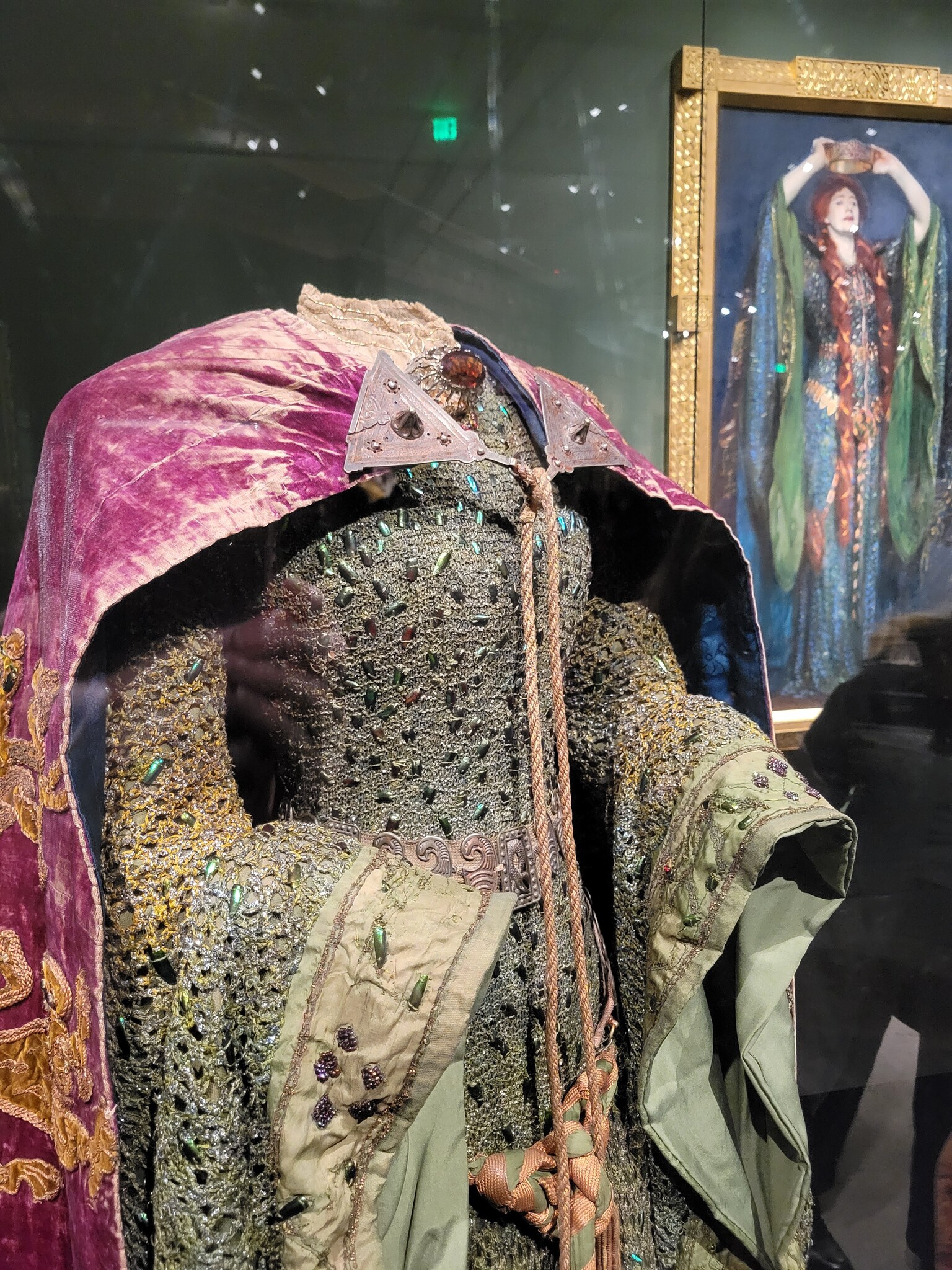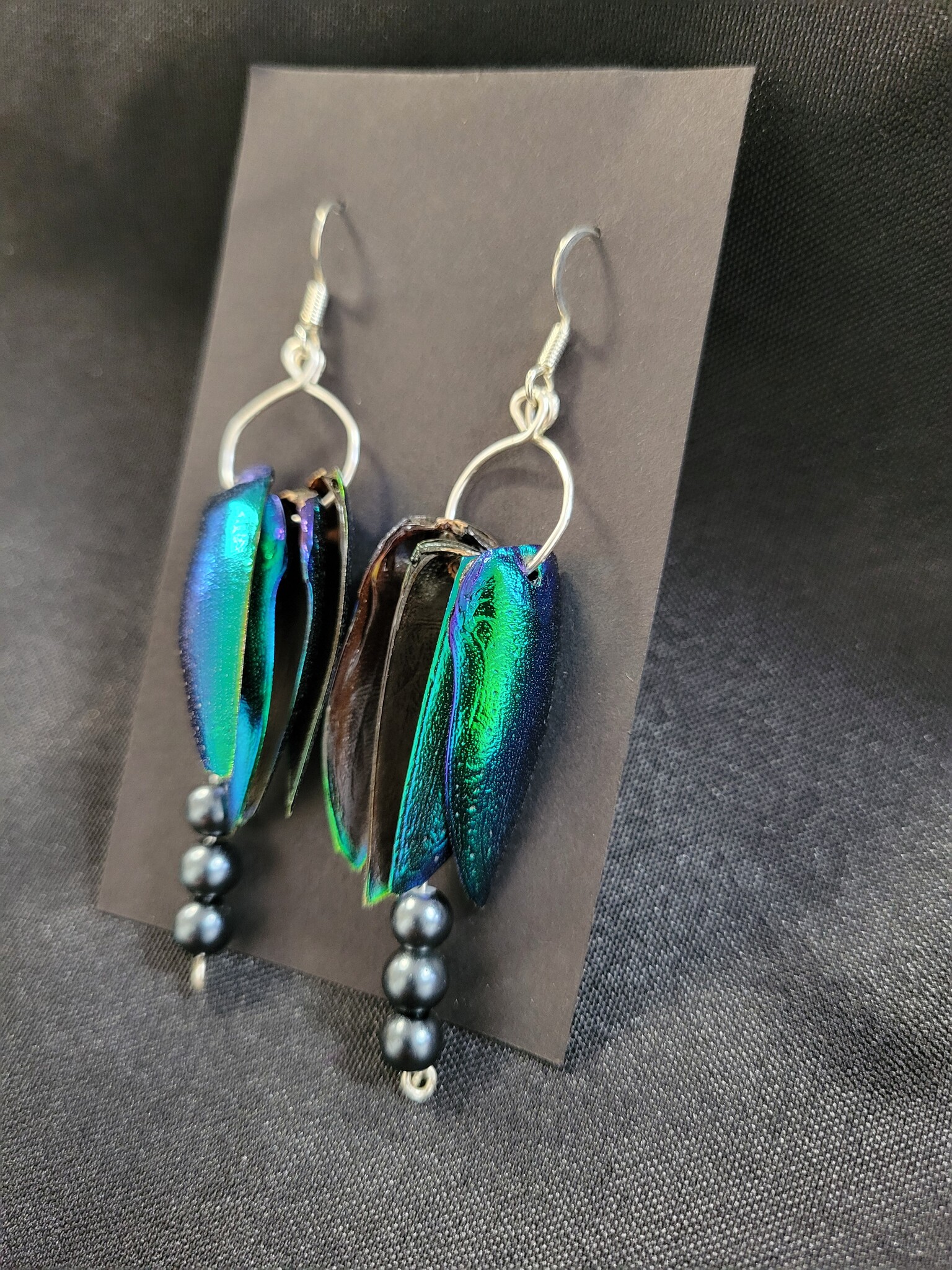Insects, Art, and Victorian High Fashion
- Posted on
- By Inge
- 0

Last month I took an excursion with my offspring, Rowan, to one of our favorite places: an art museum! Specifically we went to the Museum of Fine Arts in Boston to see their special exhibit, Fashioned By Sargent. It’s common knowledge that art is one of my great loves in life, but you may not know that in my younger years I studied and worked in costume design, so an exhibit of one of the greatest portrait painters of the Victorian era that includes the actual dresses featured in his paintings is pretty much irresistible for me.
We went on the last day of the exhibition (sorry, I wanted to blog about it while there was still time for people to check it out after reading this post, but the rush of the holidays followed by a nasty case of the flu made this the first chance I was able to go). We arrived a bit before the museum opened, which is fortunate because despite the 20 degree temperatures, there was already a line reaching to the end of the block. Joining the line, there was an interesting air of excitement. Apparently it’s common for exhibits to have high attendance when they first open, and also just before they end The mood in the line was jovial and full of anticipation, more like I would expect in line for a concert than a museum exhibit, but I found it wonderful that hundreds of people would be so excited to view art on such a cold day.
We made it through the line, deposited our jackets at the coat check, and made our way down to the exhibition. Just before the doors was a timeline of John Singer Sargent’s life, highlighting the moments that created his career. Sargent is known not only for the realism in his portraits- his skin tones are positively luminous- but also for his exceptional handling of textures, in particular: fabrics. Sargent’s fascination with capturing the unique qualities of fabrics led him to direct his clients in what they wore for his portraits- sometimes even convincing them to change into something he’d chosen at the last minute.
Walking through the doors of the exhibit, we were immediately overcome with the beauty of the paintings. They’re large, full body portraits, some even life sized. The details are incredible, not only of the subjects themselves, but also their surroundings, often including delicately petalled blossoms, stately, carved furniture, and beautifully patterned and textured backgrounds. The accompanying gowns, carefully protected behind glass, are works of art in themselves; skillfully cut and draped and adorned with intricate embroidery, gauzy lace, pearls, and fine beadwork.
Rowan and I were absolutely bedazzled by every single piece in the exhibit, but it was about halfway through that we encountered the one I was most anticipating: the Macbeth gown. Worn by famous Victorian era actress, Ellen Terry in the 1888 production of Macbeth at the Lyceum Theater for her role as Lady Macbeth, the extraordinary dress stunned London audiences, and became the talk of the season.

Ellen, dressed in the mesmerizing gown, sat for Sargent the following year, resulting in one of the most breathtaking portraits of the Victorian age. To say we were impressed to be standing in front of both the painting and the original gown is beyond an understatement.
Made from layers of silk and cotton fabrics, the outermost layer is made of crochet netting with hundreds of jewel beetle wing casings, known as elytra, stitched on as magnificently iridescent sequins. The overall effect made the actress appear serpent-like and menacing, which was, indeed, as intended.

Adorning a piece of clothing with bits of insect might seem incredibly strange to the modern audience, but in the Victorian era it was the height of elite fashion. English colonists had appropriated the jewel beetle embroidery technique from natives in India in the nineteenth century, taking the style that had already been used to embellish saris, turbans, and jamas since the at least the 16th century, and adapting it for western bustle gowns. The style grew in popularity with the upper classes throughout the 19th century, and spread throughout Europe, North America, and Australia, with some gowns boasting up to five hundred elytra speckled throughout yards of elaborate, golden embroidery.
While full gowns were the most dramatic pieces ornamented with jewel beetle wings, smaller items received the natural bling treatment, as well. Purses, shoes, and hats, while providing a smaller canvas, gave ample opportunity to show off the exquisite embroideries.
While I was excited to see the Macbeth gown from a general interest in clothing and art, Rowan was keen to see the dress for a more specific reason: Rowan graduated from art school last year, with a focus on sculpture and 3-d art, and is the creator of our beetle wing earrings. Rowan first began playing with beetle wings as a jewelry component while in art school, and a couple of the first pieces they made were given to me as a mother's day gift several years ago. A few months after opening the shop, I realized what a great fit they would be with our aesthetic, and asked Rowan if they would be willing to make them for us. They've become one of our staple items, and you can almost always find them glittering alongside our silver and stone jewelry.

As the gilded age came to an end at the beginning of the 20th century, the popularity of jewel beetle embroidery fell out of fashion along with much of the other opulence in clothing. Beetle decorated gowns are now a rarity, reserved for the occasional appearance on movie villains and in fashion shows, however the beetles themselves continue to thrive with over 15,ooo species spread throughout the world, the majority living in the northern hemisphere.
https://mfa.org/series/fashioned-by-sargent
https://fashionhistory.fitnyc.edu/beetle-wing-19thcentury/
https://www.nationaltrustcollections.org.uk/object/1118839.1

Wow! I've seen that painting (in reproductions) but never knew the story. What a great experience for you and the offspring. Thank you for sharing and giving me a new bit of knowledge to enjoy!
I saw the same exhibit and the painting of Ellen Terry held my attention for s long time!
A friend gave me a pair of beetle wing earrings and they remain a lovely (and musical, on a windy day!) additional to outfits.